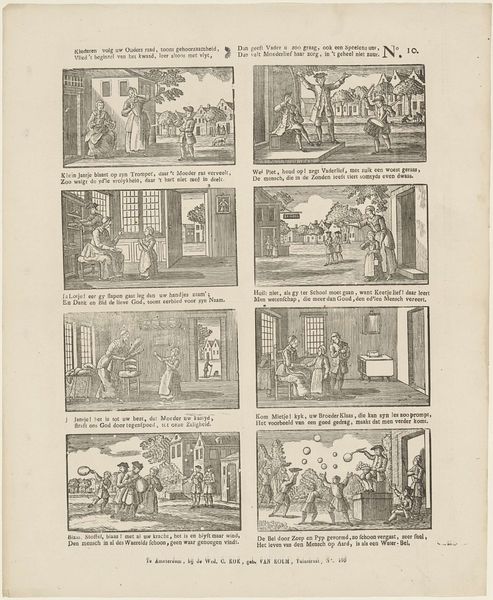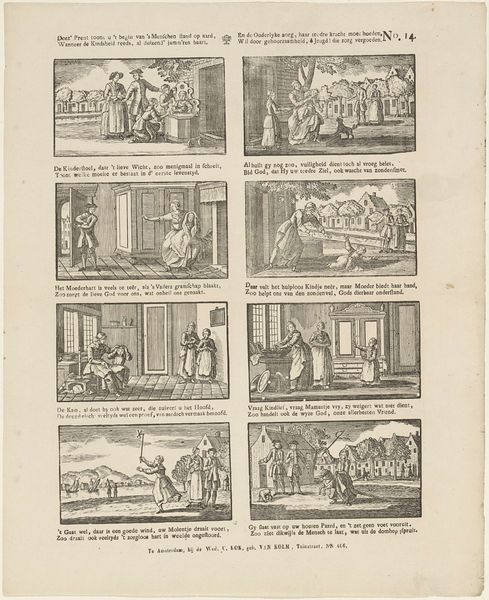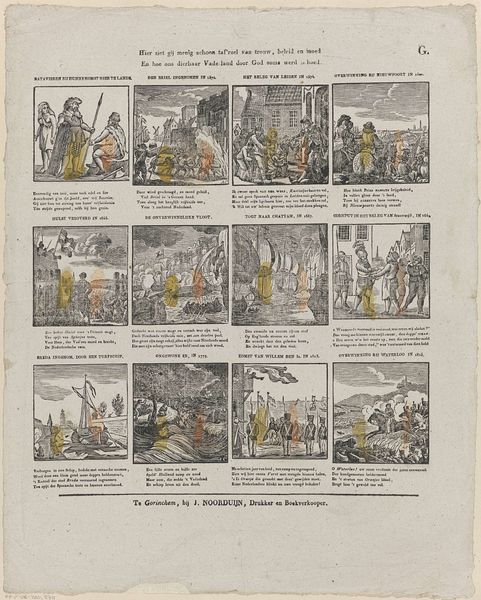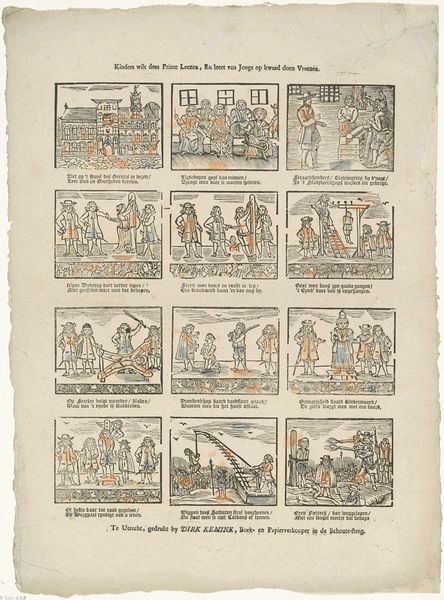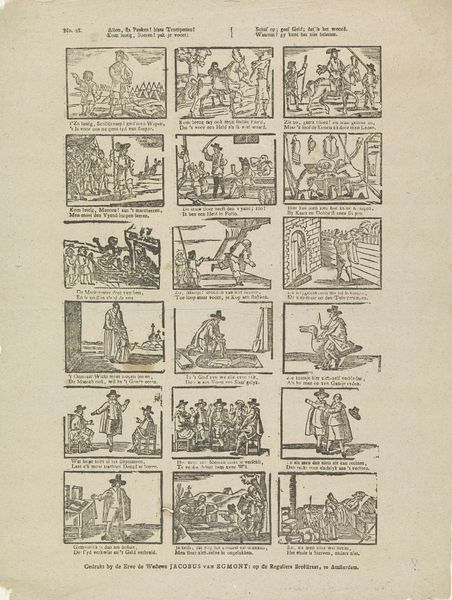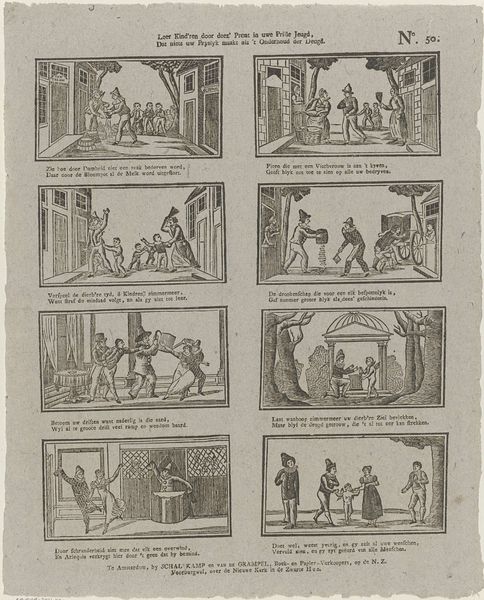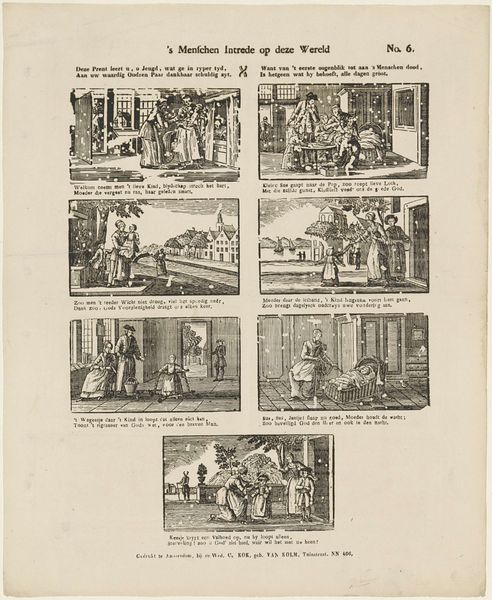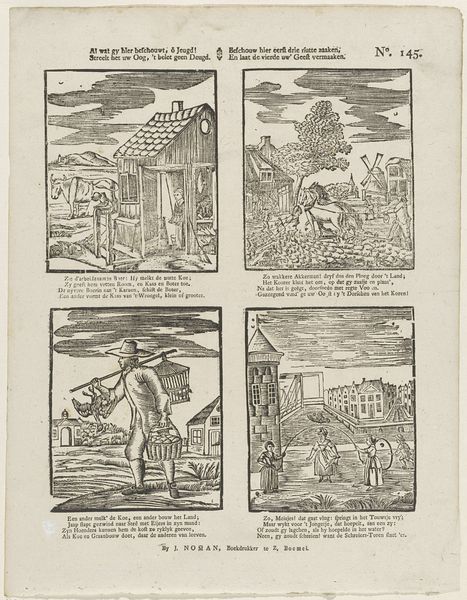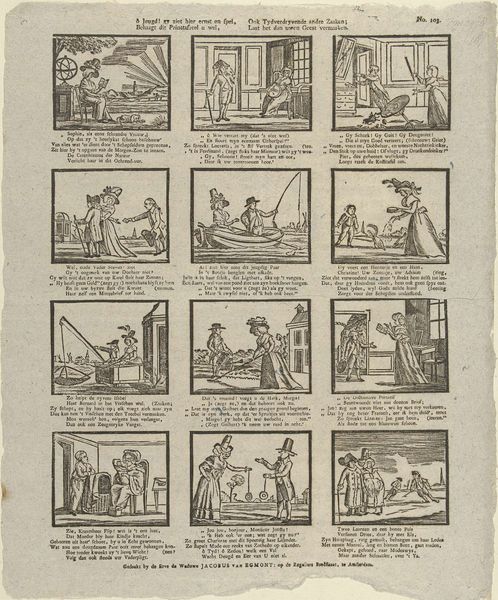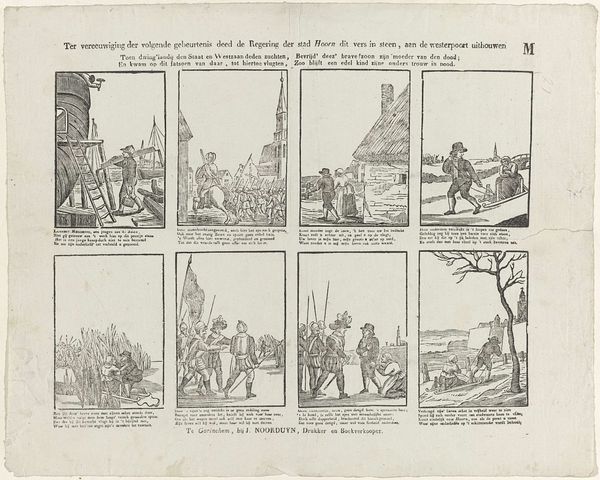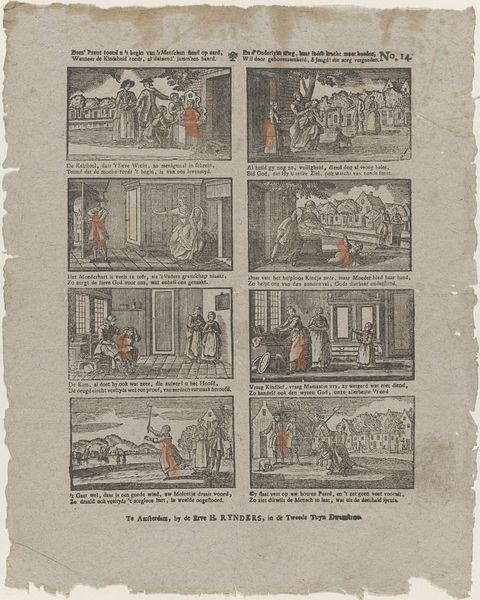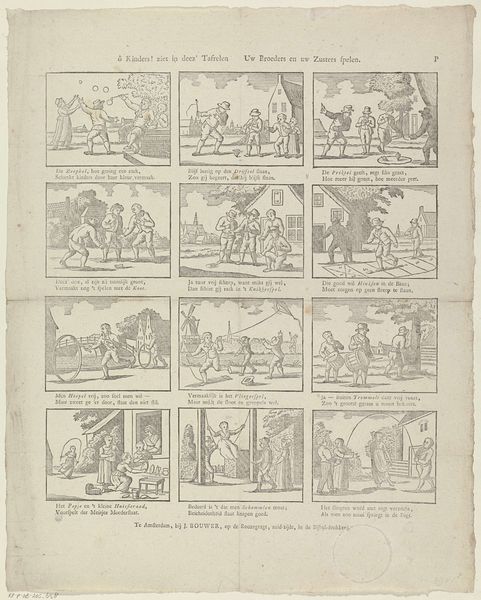
Hier kunt ge ô lieve Jeugd, uit spelen zelfs iets leeren, / Zoek nuttig tydverdryf, reeds by het vroeg begin (...) 1800 - 1850
0:00
0:00
print, engraving
#
narrative-art
#
dutch-golden-age
# print
#
figuration
#
line
#
genre-painting
#
engraving
Dimensions: height 391 mm, width 320 mm
Copyright: Rijks Museum: Open Domain
Curator: Here we have a Dutch engraving, its lengthy title roughly translating to "Here you, dear youth, can even learn something from games." It dates from around 1800-1850. Editor: It's visually dense, with a series of small scenes. A bit overwhelming at first glance, isn’t it? Though the style of line work certainly has a certain antiquated charm, reminiscent of some instructional pamphlets of that period. Curator: Precisely! The artist, listed as weduwe C. Kok-van Kolm, employed the print medium to impart moral lessons to children, depicting them engaged in various games. Consider the composition; each game illustrates a proverb about childhood. Editor: Ah, I see the connection now! There's one panel where they’re skipping rope. Are these presented as mere pastimes or virtuous practices? There seems to be the sense of how youthful exuberance interacts with social constraint. The artist also made use of semiotic elements to better covey his message. Curator: Indeed. Note the boys flying a kite high in the sky, alluding to a cautionary tale about pride, unable to withstand life’s “whirlwind”. Meanwhile, consider that a game such as ‘kootje’ requires them to reach to become successful but fortune can only make Men careless’. This piece acts a kind of a visual primer for ethical conduct. Editor: Fascinating. And it begs the question: who would this "weduwe C. Kok-van Kolm" have been, and how would her gender have affected this subject matter's social influence during that era? Were children expected to study the engravings by themselves or alongside other relatives such as tutors? The piece encourages discourse through engaging characters. Curator: Questions worth further explorations. To look beyond just the artwork itself reveals a whole new appreciation for this didactic scene. Editor: Ultimately, I'd suggest viewing “Here you, dear youth…” not as a simple period engraving, but rather, to also approach it as an entryway towards further historical queries, which should only encourage greater investigation by museum visitors.
Comments
No comments
Be the first to comment and join the conversation on the ultimate creative platform.
